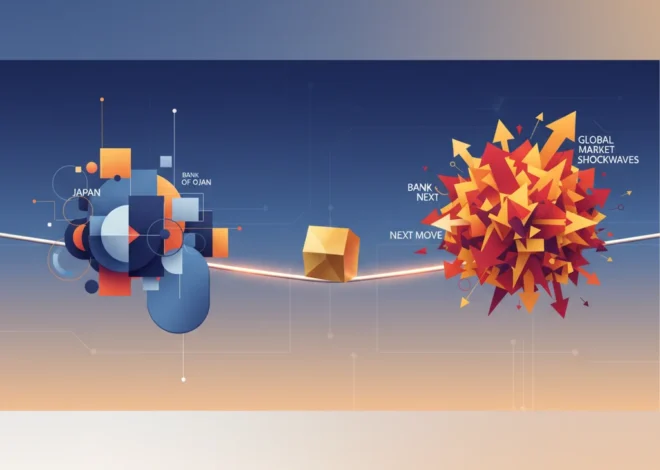
The Investor’s Brain: How 5 Life Stages of Cognitive Development Shape Your Financial Future
Why do some traders embrace high-risk assets with open arms while seasoned executives stick to blue-chip stocks? Why does a brilliant financial strategy devised in your thirties suddenly feel inadequate in your fifties? The answer may lie not just in market conditions or economic theory, but deep within the ever-changing architecture of our own brains.
For decades, we’ve operated under the assumption that the brain, once fully formed in early adulthood, remains a relatively static organ. However, groundbreaking research is painting a much more dynamic picture. Scientists have now mapped a lifelong journey of brain development, identifying five distinct phases that stretch from infancy to our senior years. This new understanding doesn’t just belong in a neuroscience lab; it offers a revolutionary framework for professionals in finance, investing, and business leadership.
By understanding which “cognitive operating system” you’re running, you can better identify your innate biases, optimize your decision-making, and build more resilient financial strategies. Let’s explore these five phases and what they mean for navigating the complexities of the modern economy.
The Five Phases of Brain Development: A Financial Roadmap
Recent analysis, synthesizing data from nearly 125,000 brain scans, has revealed a standard curve of brain development across a person’s lifespan. As detailed in a report by the Financial Times, this research uncovers how our brain tissue volume and network configurations evolve, directly impacting our cognitive abilities, risk perception, and learning capacity.
Here is a breakdown of these phases and their profound implications for financial and professional life:
| Developmental Phase | Typical Age Range | Key Brain Characteristics | Implications for Financial Behavior |
|---|---|---|---|
| Phase 1: Early Growth | Birth – Late Childhood | Rapid synapse formation; building the foundational neural architecture. | Formation of core beliefs about money and value. Highly impressionable stage for financial literacy. |
| Phase 2: Adolescent Pruning & Plasticity | ~12 – 25 years | Synaptic pruning, high neuroplasticity, underdeveloped prefrontal cortex (impulse control). | High-risk appetite, attraction to novelty (e.g., crypto, meme stocks), rapid learning of new financial technology, potential for impulsive trading. |
| Phase 3: Peak Integration | ~25 – 40 years | Myelination completes, executive functions (planning, analysis) are at their peak. Networks are fast and efficient. | Optimal period for complex financial modeling, strategic career building, and developing disciplined long-term investment plans. Prime time for innovation in fintech. |
| Phase 4: Mature Stability | ~40 – 65 years | Networks stabilize, plasticity decreases. Reliance on established mental models and experience. | Expert pattern recognition, sound judgment based on experience. Potential for cognitive rigidity and resistance to disruptive ideas like blockchain or new economic models. |
| Phase 5: Senior Restructuring | 65+ years | Gradual decline in gray matter volume, but compensation through “crystallized intelligence” and wisdom. | Focus on wealth preservation over accumulation. Deep understanding of market cycles. Potential vulnerability to complex new financial products or scams. |
Phase 2: The High-Stakes World of the Plastic Brain (Teens to Mid-20s)
This is the brain of the disruptor, the innovator, and the high-risk trader. During this phase, the brain undergoes a process of “pruning,” trimming away unused neural connections while strengthening others. This, combined with a still-developing prefrontal cortex, creates a perfect storm for high-risk, high-reward behavior. The research highlights this period’s immense capacity for learning and adaptation.
In the financial world, this translates to a natural affinity for volatile assets and emerging technologies. The crypto boom and the GameStop saga were largely fueled by this demographic’s cognitive profile. They can quickly grasp complex new systems like decentralized finance (DeFi) but may underestimate tail risk. For leaders in the banking and investment sectors, this cohort represents both a massive opportunity for growth and a significant challenge in terms of investor education and risk management.
The BBC's Billion-Pound Blind Spot: Why Its Next Leader Must Be a Finance Pro
Phase 3: The CEO Brain at its Peak (Mid-20s to 40s)
As the brain’s networks finish myelinating, our executive functions reach their zenith. This is the period of peak fluid intelligence—the ability to reason, solve novel problems, and think abstractly. Professionals in this stage are primed for the intense analytical demands of investment banking, quantitative trading, and corporate strategy.
An individual in this phase can synthesize vast amounts of economic data, build sophisticated financial models, and execute complex, multi-year plans. It’s no coincidence that many successful entrepreneurs and executives make their mark during this period. Their brains are optimized for building and scaling, making them the engine of the global economy. The challenge here is to lay the foundation for a durable investment philosophy that will serve them long after this peak cognitive performance begins to plateau.
Phase 4: The Veteran Investor’s Edge (40s to Mid-60s)
While neuroplasticity wanes, it’s replaced by something equally valuable: crystallized intelligence. This is the accumulation of knowledge, experience, and established mental frameworks. The veteran portfolio manager or seasoned CEO in this phase excels at pattern recognition. They’ve seen multiple stock market cycles and can cut through the noise to make decisions based on decades of experience.
However, this stability can be a double-edged sword. The reliance on established models can lead to cognitive rigidity. A brain in Phase 4 might struggle to appreciate the paradigm-shifting potential of a new financial technology or dismiss a new economic trend that doesn’t fit historical patterns. The key to success in this stage is to consciously fight against this cognitive inertia and remain open to new information, perhaps by mentoring younger professionals who are still in their highly plastic Phase 2 or 3 brains.
Europe's Trillion-Euro Question: Can a United Financial Front Win the Global Tech Race?
Harnessing Your Cognitive Timeline for Financial Success
This five-phase model is more than just a scientific curiosity; it’s an actionable tool for self-awareness and strategic planning. The original study provides a roadmap; it’s up to us to apply it.
For Individual Investors:
- Know Thyself: Identify your current phase. If you’re in Phase 2, acknowledge your bias toward novelty and risk. Implement strict rules-based systems for trading to counteract impulsivity. If you’re in Phase 4, actively seek out and evaluate disruptive ideas you might instinctively dismiss.
- Life-Cycle Investing, Reimagined: Traditional financial advice links risk tolerance to age and retirement horizons. This neuroscientific framework adds a deeper layer, suggesting we should also align our strategies with our cognitive strengths and weaknesses at each stage.
For Business Leaders and Organizations:
- Build Cognitively Diverse Teams: A successful team needs the neophilic creativity of Phase 2, the analytical horsepower of Phase 3, and the experienced wisdom of Phase 4. Pairing a young fintech developer with a veteran banker creates a powerful synergy that can mitigate the blind spots of each.
- Tailor Training and Development: Onboarding for a 22-year-old should leverage their high plasticity with immersive, rapid-learning environments. Professional development for a 50-year-old should focus on leveraging their deep expertise while challenging their established mental models.
The Nvidia Paradox: Why AI Supremacy is a Double-Edged Sword for Investors
Conclusion: The Final Frontier of Financial Alpha
The quest for an edge in investing and business is relentless. We analyze every economic indicator, every market trend, and every technological disruption. Yet, we have largely ignored the most critical variable in the equation: the biological evolution of our own decision-making hardware.
Understanding the five phases of brain development is the next frontier in behavioral economics and finance. It allows us to move beyond simply identifying cognitive biases and start understanding their neurological roots and predictable timelines. By embracing this knowledge, we can become more self-aware investors, more effective leaders, and more insightful students of the global economy. The ultimate alpha may not be found in the stock market, but in the mirror.


